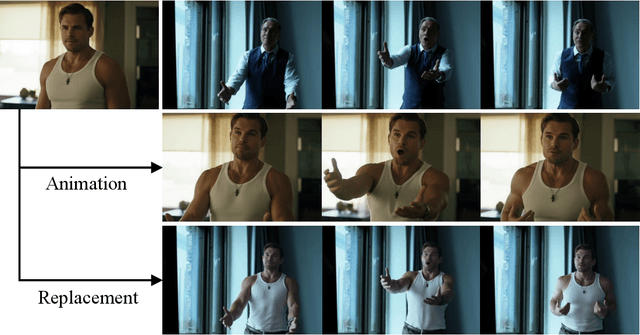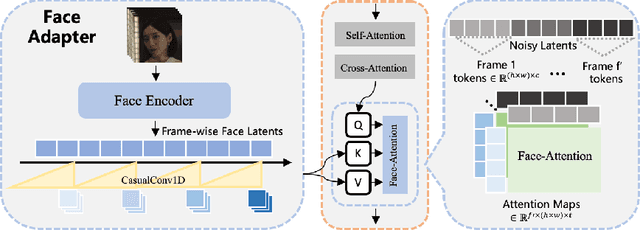Gang Cheng
Wan-Animate: Unified Character Animation and Replacement with Holistic Replication
Sep 17, 2025



Abstract:We introduce Wan-Animate, a unified framework for character animation and replacement. Given a character image and a reference video, Wan-Animate can animate the character by precisely replicating the expressions and movements of the character in the video to generate high-fidelity character videos. Alternatively, it can integrate the animated character into the reference video to replace the original character, replicating the scene's lighting and color tone to achieve seamless environmental integration. Wan-Animate is built upon the Wan model. To adapt it for character animation tasks, we employ a modified input paradigm to differentiate between reference conditions and regions for generation. This design unifies multiple tasks into a common symbolic representation. We use spatially-aligned skeleton signals to replicate body motion and implicit facial features extracted from source images to reenact expressions, enabling the generation of character videos with high controllability and expressiveness. Furthermore, to enhance environmental integration during character replacement, we develop an auxiliary Relighting LoRA. This module preserves the character's appearance consistency while applying the appropriate environmental lighting and color tone. Experimental results demonstrate that Wan-Animate achieves state-of-the-art performance. We are committed to open-sourcing the model weights and its source code.
Modeling Analog Dynamic Range Compressors using Deep Learning and State-space Models
Mar 24, 2024Abstract:We describe a novel approach for developing realistic digital models of dynamic range compressors for digital audio production by analyzing their analog prototypes. While realistic digital dynamic compressors are potentially useful for many applications, the design process is challenging because the compressors operate nonlinearly over long time scales. Our approach is based on the structured state space sequence model (S4), as implementing the state-space model (SSM) has proven to be efficient at learning long-range dependencies and is promising for modeling dynamic range compressors. We present in this paper a deep learning model with S4 layers to model the Teletronix LA-2A analog dynamic range compressor. The model is causal, executes efficiently in real time, and achieves roughly the same quality as previous deep-learning models but with fewer parameters.
Modeling of SCADA and PMU Measurement Chains
Dec 06, 2023Abstract:In this document, the supervisory control and data acquisition (SCADA) and phasor measurement unit (PMU) measurement chain modeling will be studied, where the measurement error sources of each component in the SCADA and PMU measurement chains and the reasons leading to measurement errors exhibiting non-zero-mean, non-Gaussian, and time-varying statistical characteristic are summarized and analyzed. This document provides a few equations, figures, and discussions about the details of the SCADA and PMU measurement error chain modeling, which are intended to facilitate the understanding of how the measurement errors are designed for each component in the SCADA and PMU measurement chains. The measurement chain models described here are also used for synthesizing measurement errors with realistic characteristics in simulation cases to test the developed algorithms or methodologies.
 Add to Chrome
Add to Chrome Add to Firefox
Add to Firefox Add to Edge
Add to Edge